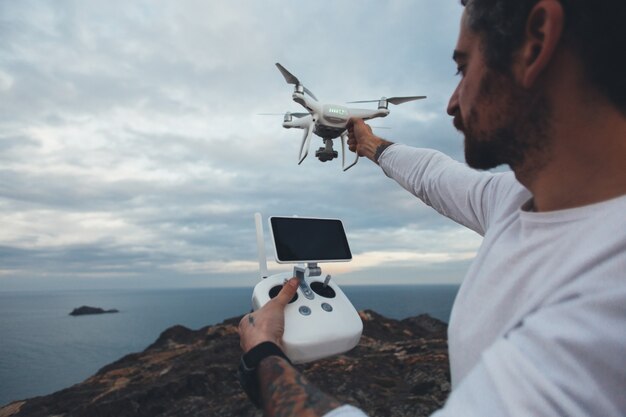
Sponsored article
The rapid advancement of drone technology brings with it significant opportunities and challenges. As drones become increasingly integral to various sectors, from commercial to military applications, ensuring the security and reliability of their signals becomes paramount. This article delves into the sophisticated realm of drone signal disruption technologies, examining the tools and strategies that are leading the charge in overcoming interference issues. Dive into the complexities and innovations shaping this crucial aspect of modern drone operations.
Understanding the basics of drone signal disruption is essential for grasping the technology behind protecting air spaces from unauthorized drone activities. At its core, drone signal interference involves interrupting the communication between a drone and its operator, which often relies on radio frequency waves. This is where radio frequency jamming plays a crucial role. By emitting signals on similar frequencies, these jammers effectively create a wall of interference, preventing the drone from receiving controls or sending feedback. This fundamental concept allows for various defense mechanisms against unwanted drone intrusion. The intricacies of these mechanisms give rise to different types of drone jammers, each designed for specific applications, such as wide-range coverage or targeted disruption. The seamless integration of such technologies ensures that drones are driven to fail-safe modes, such as an automatic landing or a return to their home point, thus maintaining the security of sensitive areas.
Innovative technologies combating signal interference in drones are at the forefront of modern advancements, addressing critical challenges faced by operators in diverse industries. As drones become increasingly integrated into commercial and recreational activities, the risk of signal disruption poses significant operational hurdles. Advanced signal disruption technologies are being developed to ensure reliable and secure drone operation. Among these technologies are new counter-drone solutions that actively detect and mitigate interference, safeguarding the integrity of drone communications. Newly designed systems leverage artificial intelligence and machine learning algorithms to predict and respond to potential disruptions in real-time, enhancing the resilience of drones against signal attacks. Additionally, innovation in spectrum utilization and encryption techniques provides robust defense mechanisms, ensuring drones maintain robust connections even in congested electromagnetic environments. These pioneering systems not only protect against current threats but also offer scalable solutions for future challenges in drone signal disruption.
The deployment of advanced technologies in drone signal disruption must navigate a complex web of drone regulation, ethical concerns, and a comprehensive legal framework. These regulations play a pivotal role in ensuring that the development and use of drone jamming technologies do not infringe upon privacy rights or disrupt legitimate drone operations. Ethical concerns arise when considering the potential for misuse or unintended interference with critical services. Key considerations include:
The influence of the legal framework extends to research and development phases, impacting innovation and potentially slowing the deployment of new solutions. Addressing these regulatory and ethical implications is essential for the responsible integration of drone disruption technologies in society.